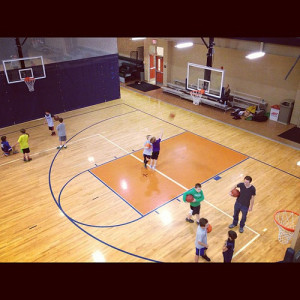The Drill Selection Differences between Senior and Junior Teams
Drill Selection is one of the most troubling concerns for junior coaches from their range of roles. Finding drills that are suitable for their team and that are reflective of their needs can be an exhaustive process. What might come as a surprise for many coaches is that drill selection is also a significant task for senior or experienced coaches.
Many coaches as they gain experience will have a certain range of drills they go to for the development of each and every technical or tactical aspect. We often call this collection of exercises a drill bank. The problem for most junior and senior coaches is finding the right drill for the job. This is because there are significant differences between what needs to be trained, and how this needs to be trained for junior and senior players but drills are not always explicit in this information.

The first aspect of change comes from the focus of moving from tactical to technical drills. Junior coaches should rightly provide time (often in large blocks) for technical skill development. Junior players need to see, practice and perfect the technique of various basketball skills. This is especially true in the offensive aspects laying the ball up, shooting and dribbling. These skills need an excessive amount of time to be developed. This however is not the focus at the senior level. Because time is so precious when the team is together, more focus is placed onto tactically based drills. The technical drills are often shifted to small group or individual sessions.
The second aspect that helps define drill selection between senior and junior teams is the addition of defence to activities. The focus at the junior level once the technical skills have been introduced and refined is for drills to then include defensive players for 1 on 1 situations. The aspect of defensive pressure should increase though as players mature. Often at the senior level defensive pressure is increased to focus on drills featuring 3 on 3 to 5 on 5 playing situations. This can further be amplified by having extra defenders within the ratio of offense and defence.
The third aspect which often is a point of difference between junior and senior teams is the increased inclusion of competition to all drills. At a senior level competition within drills should be something of a norm in practice. This is because senior or elite players should be more advanced than to solely focus on technical skills and be moving towards the application of the tactical skills. The advancement of the competition aspect is to further push senior players into increasing breakdown and drill pace. As a point of note, even in shooting drills or any other drill with a technical focus at the senior level, this must be performed under pressure and in a competitive atmosphere. Spot shooting for example should always be performed while under the pressure of a close-out.
The final aspect of difference between senior and junior teams is the attribute of decision making. For junior teams decision making is often constructed within drills to provide a right and wrong choice. This is arranged within drills by simplifying what happens within the live play of a drill. For senior teams however the decision making process evolves from this one dimensional thinking to players have a number of choices and reads to make leading to the best option being found and executed upon. Within many senior team breakdowns and drills there are any number of opportunities presented for the players who are involved, what the focus is on is if these players can evaluate and problem solve to reach the best conclusion to the flow of play. The saying that “players make plays” is only too well demonstrated within a well-planned senior team training session.
Coaches of course have a significant role to play in the planning, implementation, monitoring and review of training sessions. Coaches should be aware of these changes as elite junior teams will need to be challenged in the same ways discussed within this article for senior teams. Taking the time to plan sessions thoroughly is the key to success here. For those coaches not with an excess of time, the development of a drill bank will be vital in being able to meet the demands of constructing technically, tactically and physiologically appropriate training sessions for your teams.








Leave a Reply